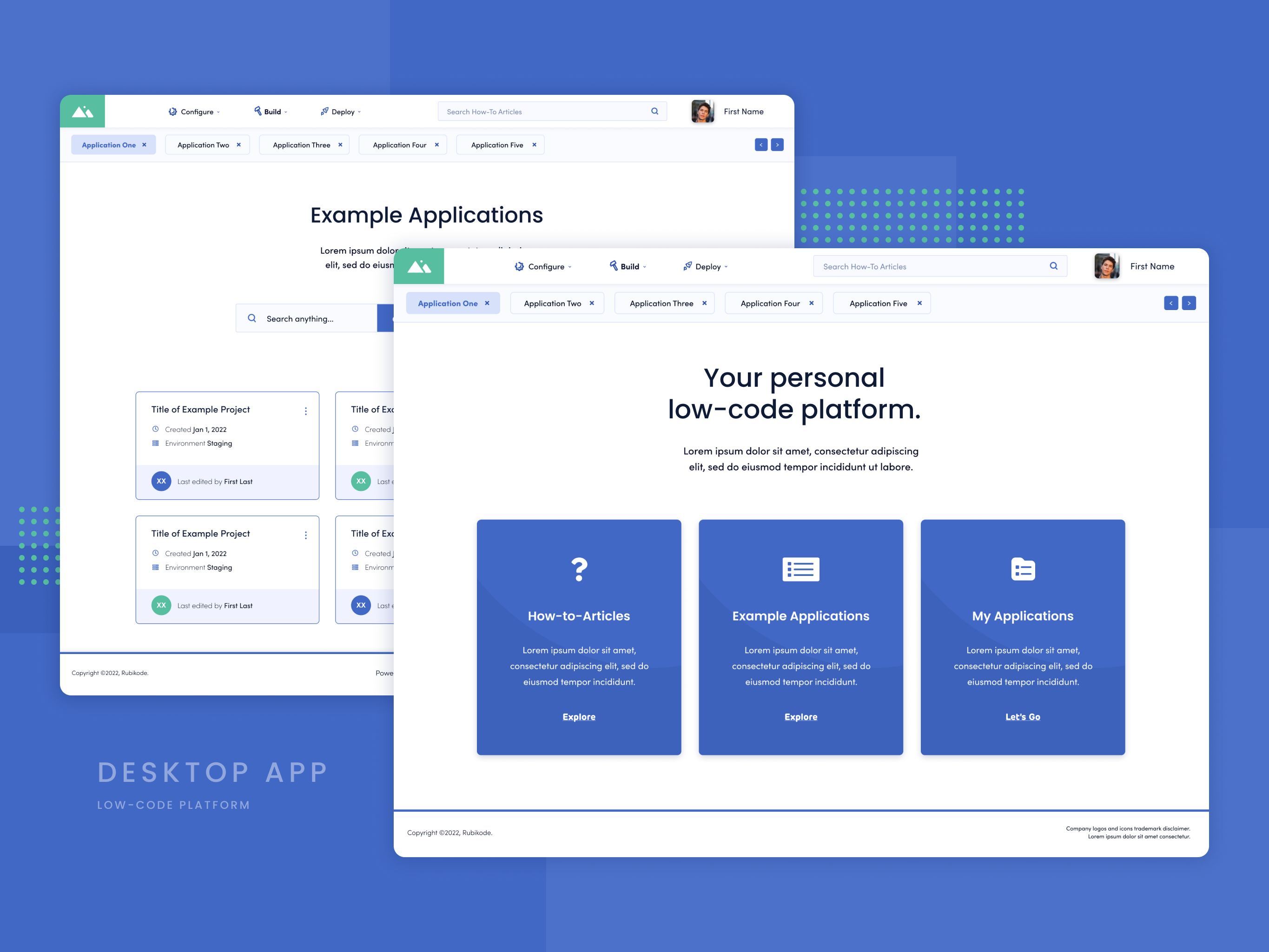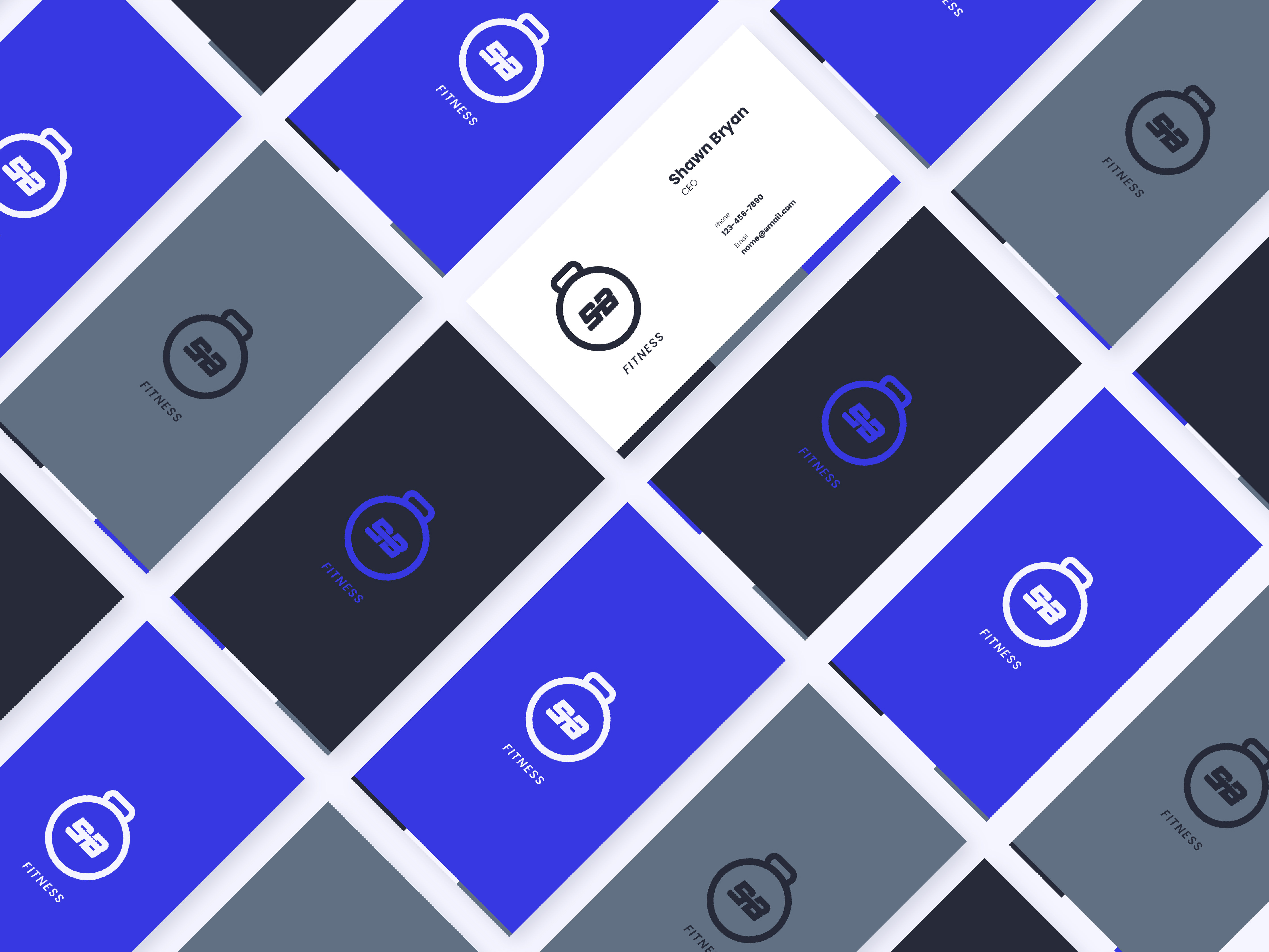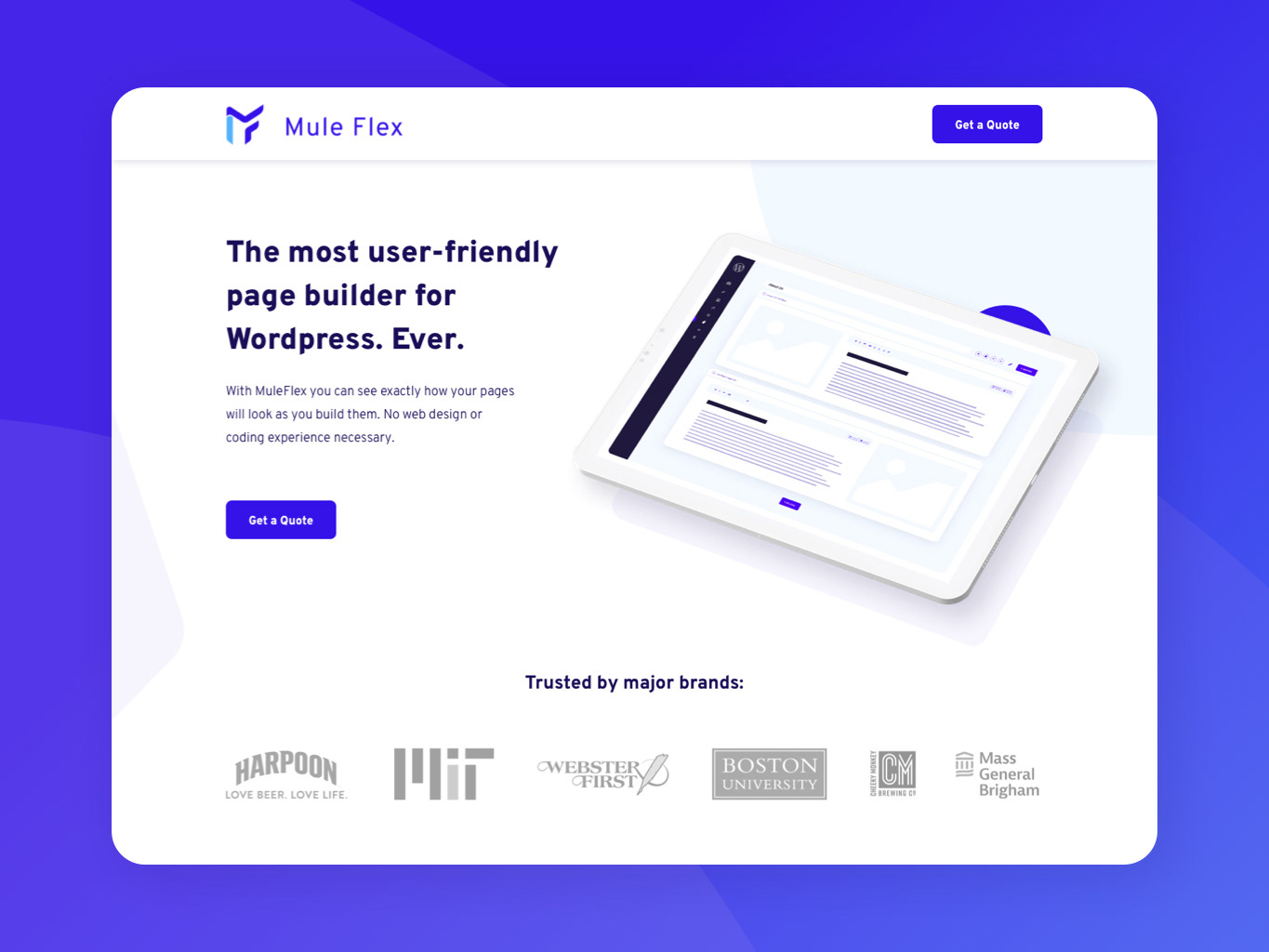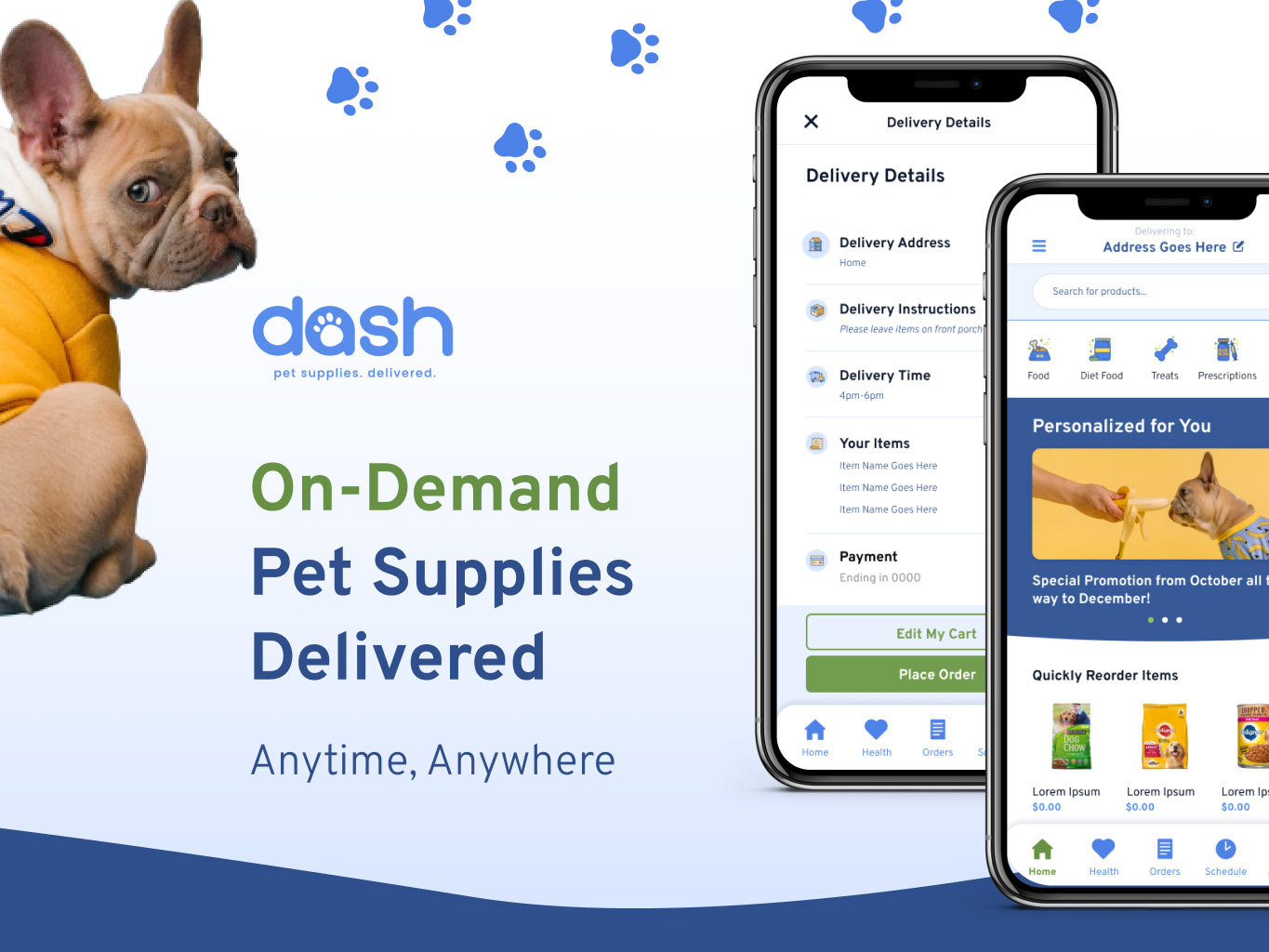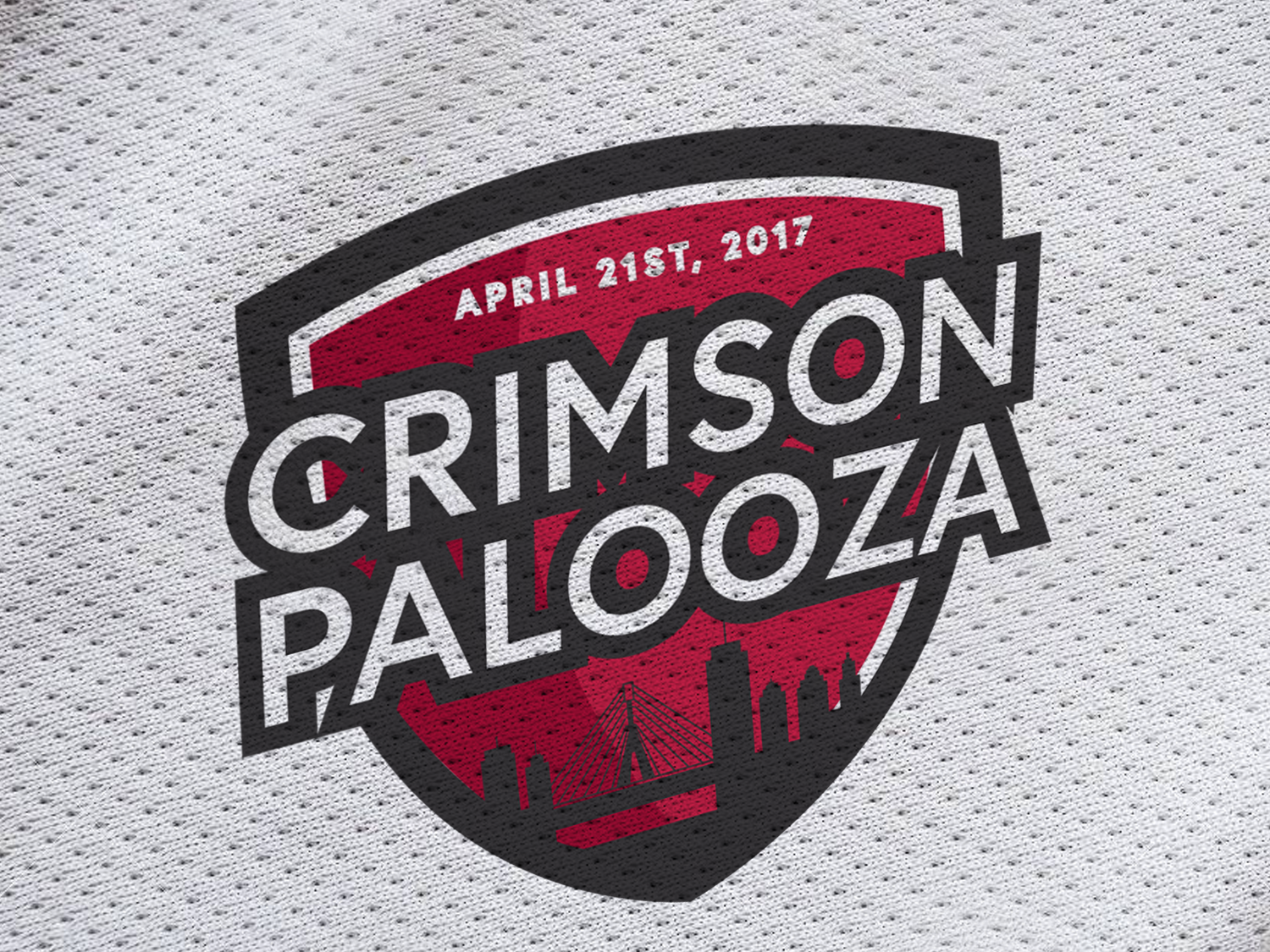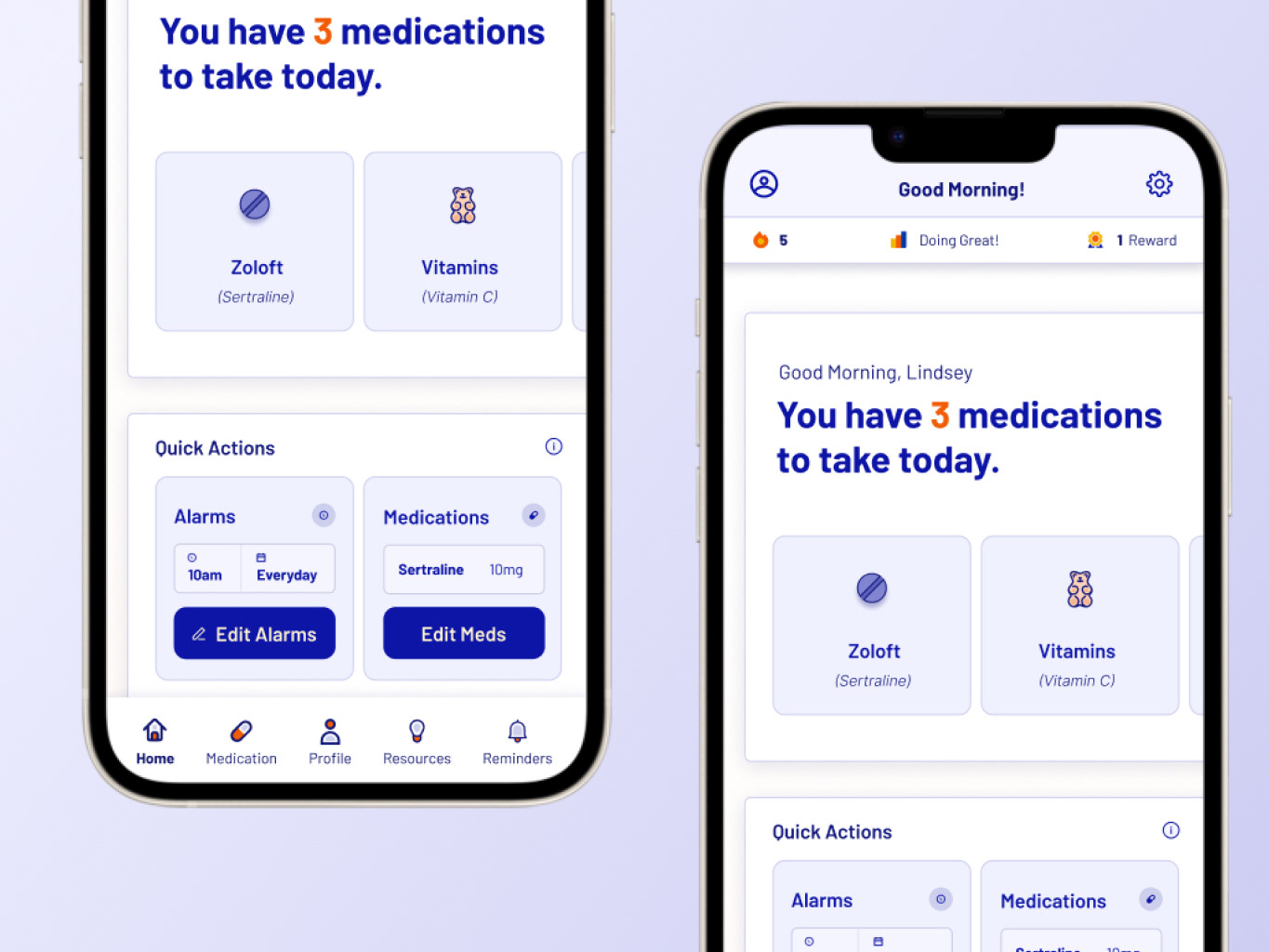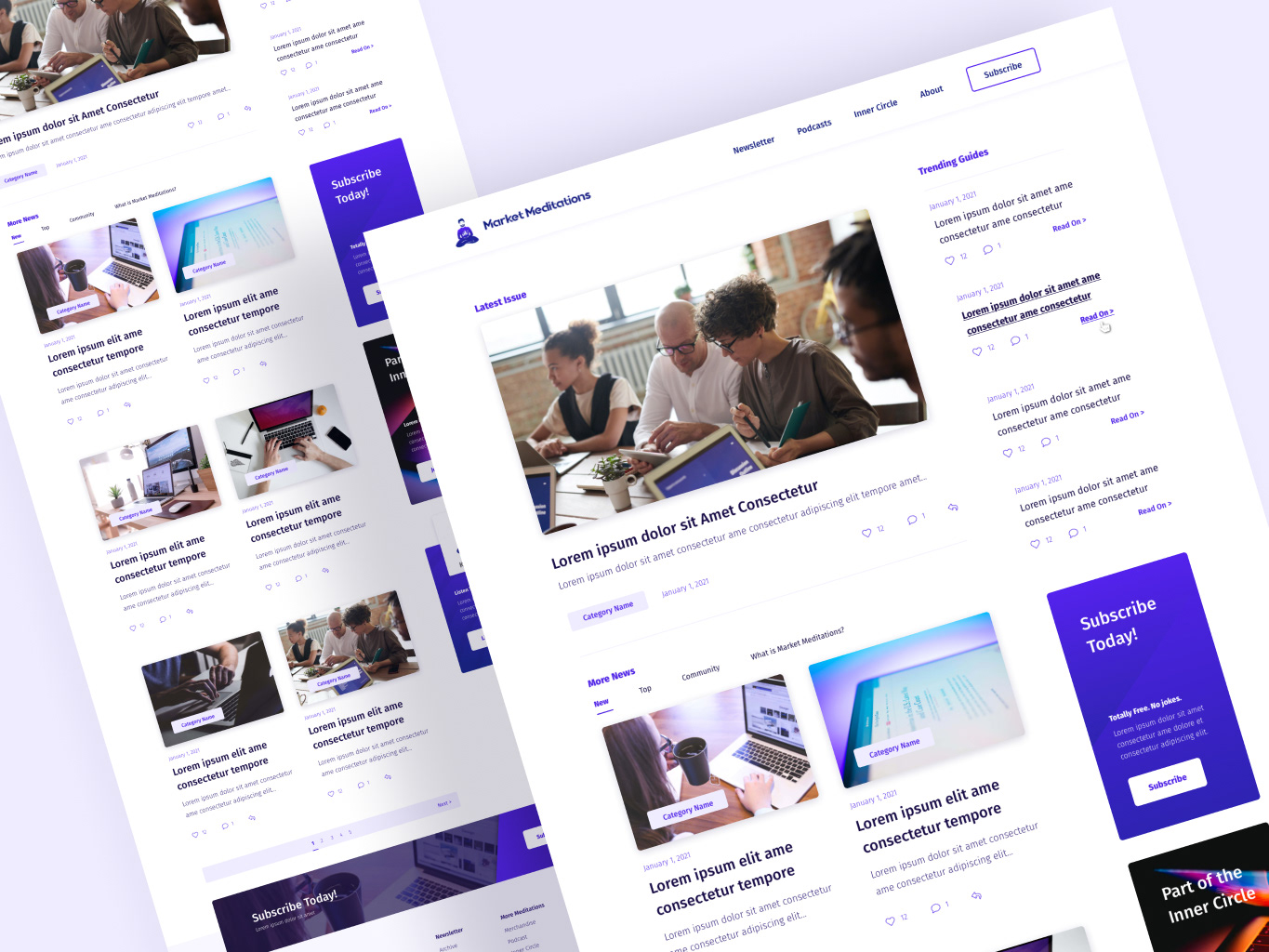About the Game
Golden Goose Scavenger Hunt is exactly what it sounds like - it's a crypto scavenger hunt. Players find clues in the form of riddles that point to places around the country that are hiding an NFT. Currently, there are two locations in the U.S. - Boston and Brooklyn. After the success of the initial location, Boston, the owner decided to open up Brooklyn and plans to hide tokens in ever major city in the U.S.
This was a multi-faceted project - it was all-hands-on-deck. My role in this project was designing the Golden Goose marketing website (https://goldengoosehunt.io/location/boston/); assisting in the design of the branding and logo; and designing the UX and UI of the minting site.
Marketing Website
After landing on gold and black in the branding, I wanted to combine the ideas of a scavenger hunt and crypto - and combining those into a website. I took inspiration from lines on a topographic map and applied them into graphics and accents in the website.
Minting Screens
Research
Before we went into design, we needed to figure out why were designing these screens and for who. When players find an NFT, they need to mint it. After some research, we found out that the minting process is not straightforward at all - it's a very convoluted process. The steps involved downloading an browser extension called MetaMask, which would take take the user out of the process as it opens externally. It also involved memorizing a secret phrase that was around 14 words in total. It was clear to us that this was a hard and tedious process to follow, which is exactly why we created this step-by-step guide.
We needed to figure out who our users would be, which we found were: people who were very knowledgeable in crypto; people who liked to partake in scavenger hunts; and people who may be getting into crypto for the first time and don't know that much about it. Our findings showed us that we have a wide range of users to design for.
With this information, we created a hypothesis - we believe that directing users through the minting process is essential for complete success in participating in the Golden Goose Scavenger Hunt. This will achieve allowing players to make money and profit from their hunt. We will have demonstrated this when we can measure the ratio of successful mints to unsuccessful mints.
User Flows and Journey Maps
The next step was to put ourselves in our users shoes - we needed to figure out exactly how a typical user went through this phase. With our wide range of users, we needed to think of edge cases - users who already have MetaMask installed; users who already have a wallet; and users who have no idea what a minting process is. Our next step was to create user flows and journey maps. Because this was such a convoluted process, we needed to understand where our users could potentially get tripped up.
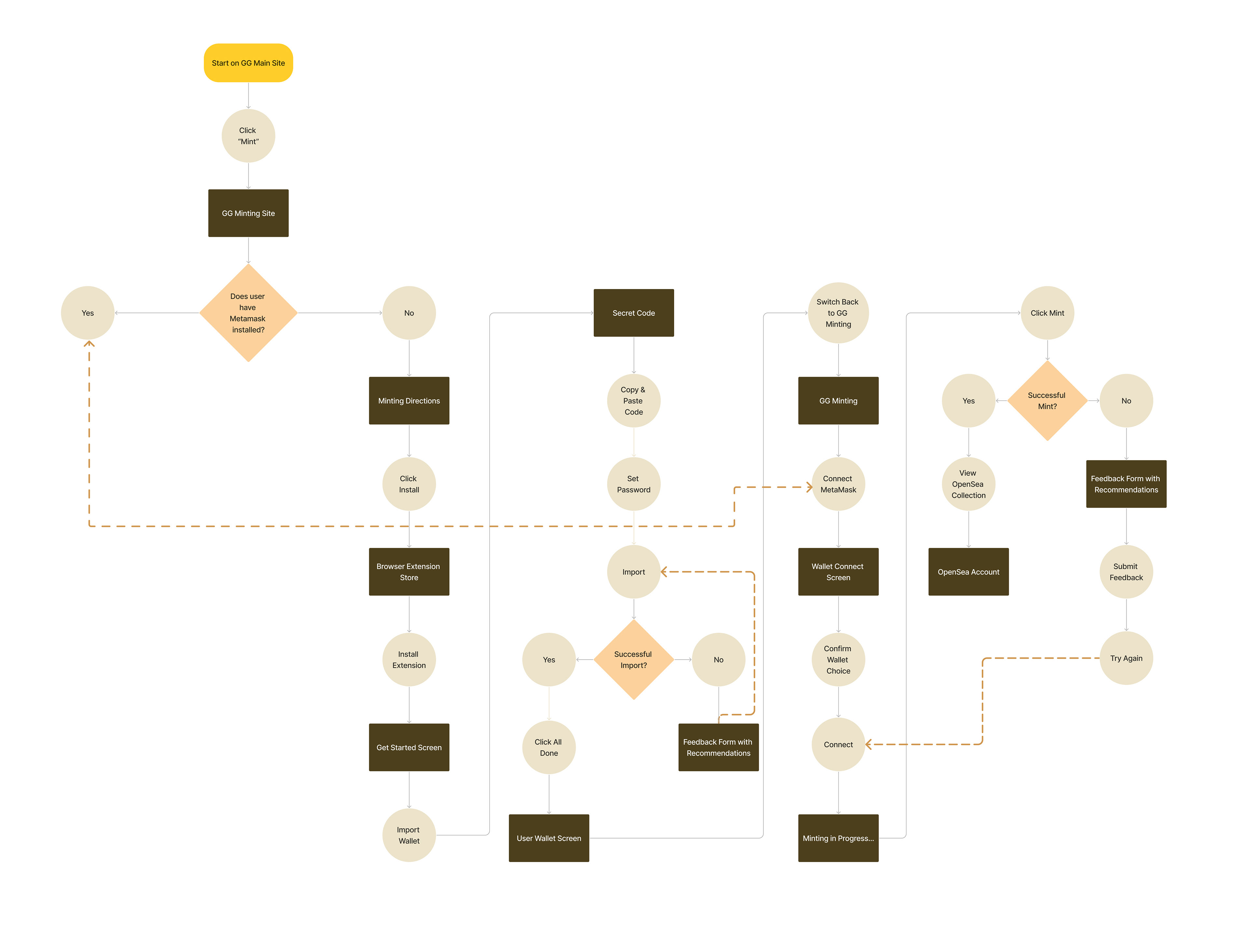
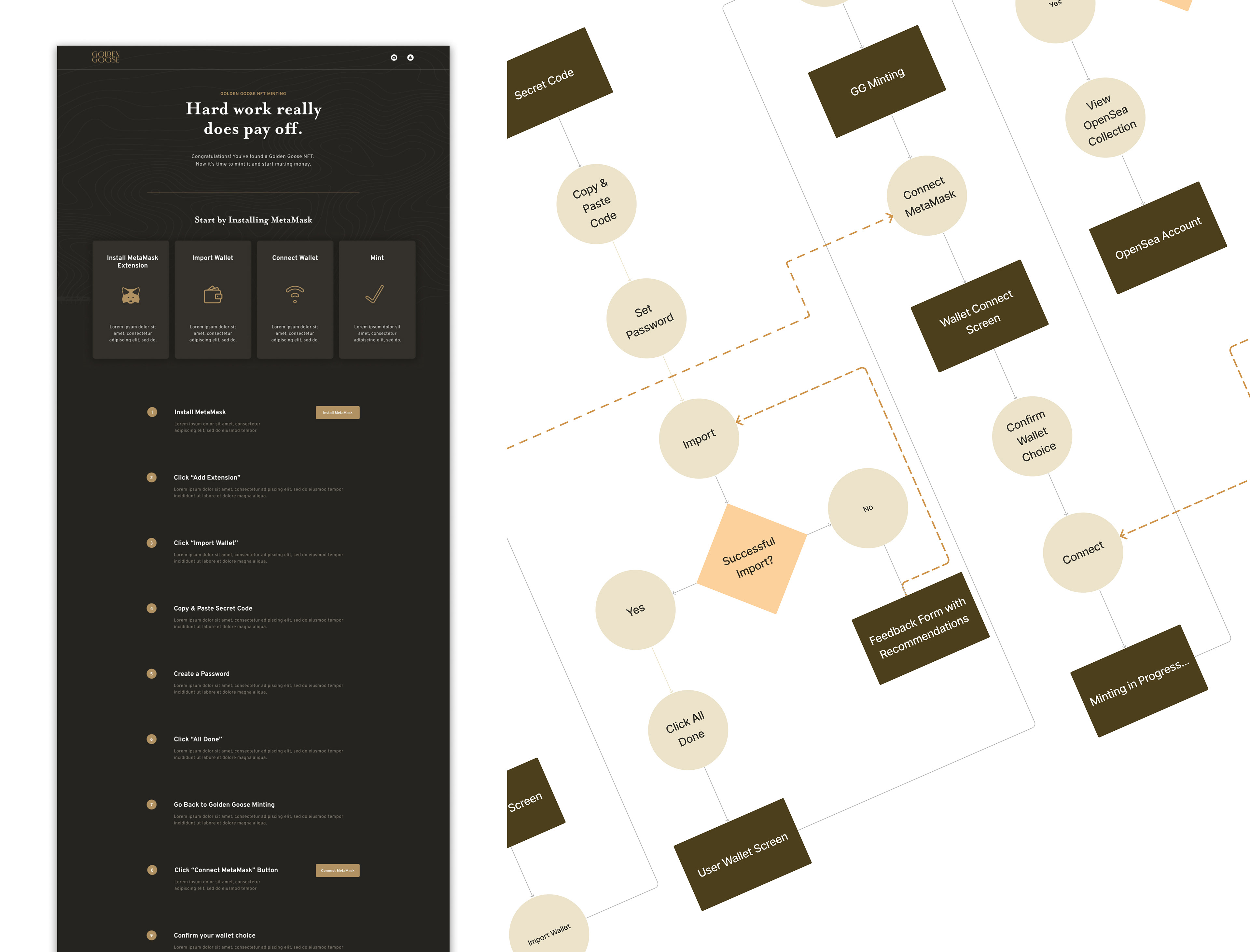

Findings
One roadblock we found is that about half-way through the process, users would need to have some money already in their wallet to pay for gas fees. We documented this finding in the user flow and journey map as that made even our team frustrated. To account for this in design, we suggested to the client and owner to put a certain amount of crypto in each token, so when a player finds it the wallet will already have enough currency to pay for these gas fees.
Another roadblock we found is that when the user is directed to install the MetaMask browser extension, the page opens externally, meaning the user would lose their spot in the directions. For our users who have never done this before, this could be extremely frustrating and scary for them. Unfortunately there was no way around the having the page opening externally, but we made sure to document every step the user had taken so far. So if the user were to be brought to an external page, they would know exactly where they left off when they were back in the minting tab.
Successful vs Unsuccessful Mints
We made sure to account for unsuccessful mints in our user flows. If a user were to encounter this, we made sure to give the user feedback, and also wanted the user to be able to give us feedback. We wanted to be able to document any unsuccessful mint, and incorporate that into the feedback we give our users. When a user encounters an unsuccessful mint, we provide them with recommended actions to try to solve the problem.
When a user has a successful mint, we direct them to their OpenSea account, where they can finally view their NFT in all it's glory. In our journey map, we documented that this could be an emotional step for the user - not only have they completed a difficult process, but now they are one step closer to making money, which makes everyone happy. To account for this happiness, I made sure to design the "Successful Mint" screen loud and proud - there should be no confusion for the user whether or not they completed or not.




